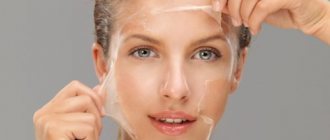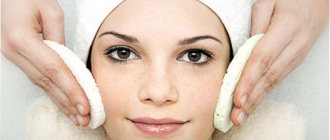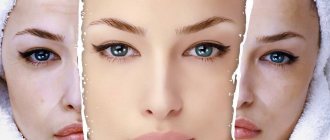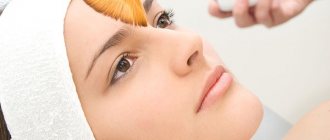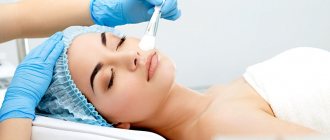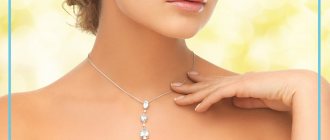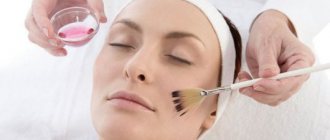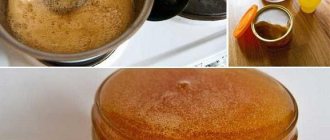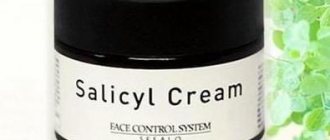Lactic acid is well known in the beauty market, but is often overshadowed by salicylic and glycolic acids - they remain the real stars of acid skin care. However, the use of lactic acid dates back to ancient Egypt - Hippocrates wrote that Cleopatra took a bath of donkey milk to smooth her skin. It is unknown how true this data is, but there is certainly a sense in such a procedure.
Lactic acid is a close relative of glycolic acid: it also belongs to the class of AHA acids. The Swedish chemist Karl Scheele first obtained the substance in 1780 from sour milk, and later his French colleague Henri Braconneau discovered that the acid is formed during lactic acid fermentation - it is to these discoveries that it owes its name. At the same time, you can get the element not only from milk and fermented milk products; there are also more ethical (vegan) sources - for example, beets or starch.
In beauty formulas, lactic acid performs the function of skin renewal. The epidermis, of course, can repair itself, but it could use some help - the accumulation of dead cells on the surface can disrupt the secretion of sebum, causing clogged pores and flaking. Lactic acid dissolves dead cells, which promotes the renewal process.
Due to the large size of the molecules, the substance is considered less aggressive than salicylic acid, but in reality it all comes down to concentration. The higher the percentage of lactic acid in the formula, the more effective its exfoliating function will be.
About the face AHA-, BHA-, PHA-acids and rules for their use for the skin: detailed instructions
About lactic acid
Lactic acid falls under the category of AHAs (alpha hydroxy acids), which are obtained from various plant foods or milk. Moreover, lactic acid, along with glycolic acid, is the leader in efficiency among the acids of this group.
It is a colorless or light yellow liquid with a sour odor, which is very characteristic of fermented milk products. Easily soluble in water, formed during the fermentation of beer, wine, and sour milk. On an industrial scale, it is obtained as a result of the breakdown of glucose.
This is a natural, biologically safe product that is widely used in cosmetology, both in beauty salons and in the manufacture of cosmetic products.
Important property : lactic acid is a component of the natural moisturizing factor - a complex of molecules that binds and retains moisture in cells.
(342) 240-37-55
Multifruit peeling gel 40% pH 2.6
Superficial peeling with alpha hydroxy acids (fruit acids) is considered the safest because they do not burn the skin - this is the most common procedure, which gives the lowest percentage of complications and the possibility of repeated procedures throughout life. Superficial peeling allows you to eliminate areas of hyperkeratosis, reduce the thickness of the stratum corneum, increase the thickness of the living layers of the epidermis, even out skin tone, and lighten hyperpigmented areas . Active ingredients: a mixture of lemon, blueberry, apple, sugar cane and grape extracts; L-form of ascorbic acid (stable), licorice glabridin, beta-glucan, chitosan.
AHA EXTRACT 44 (France)
Glycolic acid easily penetrates the epidermal barrier, has the ability to reduce hyperpigmentation, enhances epithelial exfoliation, and eliminates hyperkeratosis.
Lactic acid has a pronounced moisturizing and exfoliating effect. Malic acid - in addition to exfoliating, stimulates cells, enhancing cellular metabolism. Tartaric acid has an exfoliating, whitening and moisturizing effect. Citric acid has a whitening effect on the skin, which is enhanced in the presence of tartaric acid. Has antioxidant and bactericidal properties. L- Ascorbic Acid (Japan) - Ascorbic acid is a powerful antioxidant. Naked licorice root extract (dry) 40% glabridin (Japan) is a whitening and brightening active substance: contains 40% of the active substance Glabridin. Beta-glucan complex (Switzerland) protects the skin from premature aging, has a powerful antioxidant effect, increases its resistance to stress factors, strengthens and restores the skin’s natural defenses, and activates the regeneration process of damaged cells.
Almond peeling gel 40% pH 2.6
Almond peeling is an acidic type of peeling, its effect is based on mandelic acid, which is obtained from bitter almond extract, a gentle type of fruit peeling, it has a slight irritating effect on the skin, therefore it is recommended for thin sensitive skin.
Almond peeling is one of the most effective remedies against acne, for getting rid of the effects of acne, for oily seborrhea of the skin, and it is also used to improve skin texture. Mandelic acid has a pronounced bactericidal property; it directly affects the pathogenesis of acne. In addition, almond peeling helps eliminate facial wrinkles, the effects of early skin aging, and restore skin tone and elasticity.
Mandelic or phenoxyglycolic acid is obtained from bitter almond extract by hydrolysis Indications for almond peeling :
- acne;
- post-acne condition (disturbance of skin texture);
- age-related changes (especially fine-wrinkled skin aging);
- atony (decreased tone) of the skin;
- poor skin microcirculation;
- uneven complexion;
- hyperpigmentation.
Milk peeling gel 40% pH 2.6
Milk peeling is an acid peeling; this peeling is done using lactic acid. It is recommended for those who have sensitive skin or have contraindications to chemical peels. Milk peeling is a superficial peeling, that is, it has a gentle effect on the skin. It is often recommended as an addition to comprehensive skin rejuvenation programs. Milk peeling is used to prepare the skin for more serious cosmetic procedures. Lactic acid used for peeling activates metabolic processes in the skin. Milk peeling helps restore the moisture balance in the skin. The main advantage of milk peeling is that lactic acid is a natural substance for the human body and therefore it does not cause allergic reactions, the skin almost never becomes inflamed milk peeling Active ingredients: lactic acid, dihydroquercetin, ginkgo biloba extract, beta-glucan, chitosan, biosol.
Peeling gel with glycolic acid (70%) pH 2.6
Active ingredients: glycolic acid 70%, complex extract of Aloe Barbados, calendula flowers, witch hazel, Asian centella, Echinacea purpurea, lemon balm, linden flowers, Camellia sinensis.
When using Gel peeling with PLEYANA® 70% , be sure to use an Aqua-gel neutralizer.
Indications for the use of glycolic peeling:
- uneven, thickened, aging skin (hyperkeratosis, photoaging, fine and medium-depth wrinkles, flabby, atonic skin);
- acne (inflamed and non-inflamed); peeling and hyperkeratosis;
- scars, stretch marks, stretch marks; hyperpigmentation of various etiologies (melasma, chloasma, when taking birth control pills);
- neck dyschromia;
- seborrheic dermatitis, psoriasis, keratosis of the scalp, rosacea).
- The high efficiency and wide spectrum of action of the Peeling Gel with PLEYANA® glycolic acid is ensured by the synergistic effect of the glycolic acid solution and the components of the phytocomplex, which are unique in their significance.
Directions for use: apply the gel to pre-cleansed, moistened skin, leave for 5-15 minutes , apply the gel according to the procedure protocol, then apply PLEYANA® Intensive Activator Cream “RECONSTRUCTION” or cream corresponding to the procedure. When using Gel peeling with glycolic acid PLEYANA® 70%
Cosmetic properties of acid
This organic acid is found both in nature and in the human body, that is, it is physiological to us. Its molecule is so small that it is able to penetrate the cell membrane, working not only on the surface, but also deep in the skin. Therefore, peeling based on lactic acid can be superficial, medium and deep - it depends on the concentration of the substance.
Milk peeling at home is a superficial procedure that has a mild effect. For example, this is a more gentle procedure than peeling with a badyagi.
Acid is widely used in cosmetology practice, as well as in pharmacological production and in the manufacture of food products. As for cosmetics, it is used not only as a peeling, but also in the production of anti-aging creams, regenerating and anti-aging serums, and lotions. This is an excellent acidity regulator, as well as a powerful moisturizing and whitening component.
An important advantage of lactic acid is its naturalness. This is a natural substance for the human body that does not cause allergic reactions.
Peeling with lactic acid is one of the most popular in cosmetology. It, like other a-hydroxy acids, affects the processes of skin renewal and regeneration, effectively exfoliates dead cells, dissolving them. Thus, it eliminates the stratum corneum, smoothing the surface of the face, stimulates cell renewal and collagen production.
Peeling with lactic acid at home has an anti-aging effect, but this is a superficial procedure, so do not expect a very pronounced anti-aging effect. In general, this procedure helps problem skin more, at the first signs of aging, but does not erase deep wrinkles from the face and does not tighten it.
What are the differences and features of milk peeling?
The composition used for peeling is based on lactic (lactanoic) acid, which belongs to the group of organic acids formed during fermentation (decomposition of glucose). In nature, lactic acid is found in many products obtained by fermentation: yogurt, pickles, wine, beer, etc. In our body, lactic acid is involved in carbohydrate metabolism.
Therefore, it is no coincidence that since ancient times, dairy products have been used to combat aging and rejuvenate the skin, the effect of which has become a household name and is called “Cleopatra’s bath.”
The main advantage of lactic acid, in comparison with other types of acids used for peeling, is the small size of lactic acid molecules, which penetrates well through the intercellular membrane and provides a gentle effect on the skin. Moreover, lactic acid has a very gentle penetration, so it is suitable for problematic, hypersensitive and dry skin.
Lactic acid promotes renewal and accelerated skin regeneration, as well as skin microcirculation and the synthesis of natural collagen.
The results of the effects of lactic acid depend on its concentration (for home use, milk peeling is usually used with a concentration of 15%, and in salons the acid concentration can reach up to 90%) and is recommended for complex treatment or skin rejuvenation for people over 35 years of age.
When performing milk peeling, the following results can be achieved:
- Rejuvenation . Milk, as well as other types of surface peeling (salicylic, almond, fruit), cleanses the skin of dead cells and impurities and promotes the renewal of the dermis. During the procedure and upon its completion, cells are renewed, microcirculation in the capillaries improves, and the synthesis of collagen and elastin is enhanced. Therefore, after milk peeling, the skin is smoothed, its turgor and color improve.
- Hydration . The peeling composition penetrates well into the skin cells and thereby activates its internal reserves. Thanks to this, after the procedure she looks nourished, moisturized and healthy.
- Bleaching . Any acid, including lactic acid, included in the peeling has a whitening effect. Gentle skin whitening allows you to eliminate all skin irregularities, whiten freckles and age spots.
- Protection . Milk peeling activates the protective functions of the skin, stimulating the production of linoleate-containing ceramides, thanks to which it is resistant to various bacteria.
- Safety . Unlike medium or deep peeling, when performing milk peeling the risk of injuring the skin is reduced to zero. Lactic acid is also safe for those who are prone to allergies or irritation. During the procedure, as a rule, only a slight tingling sensation is felt - and nothing more.
- Versatility and practicality . The superficial and gentle effect of milk peeling allows it to be used for all skin types, including very sensitive ones. There are no visible consequences after the procedure, so the procedure, as well as almond peeling, can be carried out almost all year round.
Indications for peeling
Facial peeling with lactic acid is multifunctional. It has a rejuvenating effect and also changes the quality of the skin, improving its condition. Why can you do milk peeling?
Among the indications:
- the presence of facial wrinkles, especially nasolabial and glabellar wrinkles;
- enlarged pores;
- aged skin that has lost its tone, with signs of aging;
- acne;
- spots and scars after acne;
- numerous age spots;
- poor complexion, loss of elasticity and firmness;
- a thickened stratum corneum, which causes the skin to become uneven.
MIXIT, Skin Chemistry, Lactic Acid Exfoliating Serum
In the new product from MIXIT, lactic acid is combined with hyaluronic acid - this combo is ideal for working with wrinkles and acne. On the one hand, lactic acid will control the functioning of the sebaceous glands and prevent the occurrence of rashes, and hyaluronic acid, on the other hand, will maintain an optimal level of hydration for firmness and elasticity of the skin.
Precautions and contraindications
- pregnancy and lactation;
- skin damage;
- the use of retinoids and some antibiotics, which increase the photosensitivity of the skin;
- the presence of inflamed acne.
Milk peeling at home can only be carried out taking into account the following important rules:
RULE 1: Never apply the composition if your skin is inflamed. RULE 2: milk peeling at home cannot be done with pure acid, otherwise you will burn the dermis and get deep burns. RULE 3: chemical peeling with lactic acid should be done during periods of minimal solar activity. After peeling, you should not sunbathe to avoid the appearance of age spots. RULE 4: when doing milk peeling of the face, do not rub your face - the peeling effect is not achieved by rubbing the skin, the acid acts without your help. RULE 5: when your face begins to peel, do not pick off the crusts and peeling. RULE 6: be sure to check for allergic reactions! A day before the procedure, apply a small amount of diluted acid to the bend of your elbow and monitor the reaction. Although it is indicated even for sensitive skin, different individual reactions are possible. RULE 7: It's good if you do pre-peel preparation. To do this, you can apply tonics or creams with minimal acid content to the skin for several weeks. RULE 8: stock up on Panthenol in case you need to soothe the skin after the procedure.
Very important:
Many people perceive lactic acid as a harmless product. However, it is still an acid, which, if used improperly, can ruin your skin. Medvyana Magazine recommends that you first do a lactic acid peel at a salon to see how your skin reacts. Remember that everyone’s skin is different, and an individual reaction is possible, so for the first time such serious procedures are best done under the supervision of a cosmetologist.
Advantages and disadvantages of the procedure
Milk peeling is widely used in cosmetology; it has a number of advantages. Among the positive aspects of its use are the following:
- An allergic reaction rarely occurs after the procedure. It is best to do it in premium salons, where cosmetologists strictly control the quality of the drug.
- Peeling can be done in the summer. It can be safely applied by women with dark skin.
- Does not require long recovery after the procedure, so it is suitable even for sensitive skin.
- The epidermis exfoliates moderately. Girls do not have to worry that their appearance will suffer.
- There is no need to prepare the skin for applying the acid.
The procedure is perfect for clients under 35 years of age. At a more mature age, it is worth choosing other types of peelings, because milk peeling is not effective enough for noticeable signs of aging.
Many women are bothered by stretch marks, especially often they form during a sharp weight loss during a diet. Milk peeling will quickly deal with them.
Lactic acid can be used if fine wrinkles appear and the complexion begins to fade. Indications for use include enlarged pores and acne.
The beautician will apply lactic acid to the face and neck. The product is ideal for the décolleté and other areas that need to be eliminated from stretch marks. Lactic acid combines perfectly with other ingredients. During the client's first visit, an experienced specialist will perform a sensitivity test by dropping a small amount of lactic acid onto the skin. If there are no negative consequences, peeling can be done.
A cosmetologist can create combinations of several active substances.
Having decided to undergo the procedure, you need to pay attention to the composition of the drug. Sometimes manufacturers, in an effort to enhance its effect, add other substances to it. They can have a negative effect on the epidermis. For example, a high concentration of glycerol leads to skin dehydration. Burns are possible, so when applying peeling, you must strictly follow the protocol. Those women who decide to do peeling at home should be especially careful.
The only drawback of lactic acid is that it cannot eliminate serious age-related changes.
Peeling after peeling
An important question is whether the skin will peel after milk peeling, and how much? This depends on the concentration of the substance.
For example, light exfoliation with a 5% solution will not cause peeling, 10% also does not cause severe peeling, 20% may cause peeling on the second day, with 40% the skin will peel off. However, 40% facial peeling with lactic acid can be done only for pronounced defects (for example, deep scars and age spots), and only towards the end of the course.
Important: it is not recommended to do a concentration of 40% or higher at home so as not to get burned!
What will be the result after milk peeling?
Peeling action
- The cell renewal process is stimulated, which slows down with age. In general, after the procedure, mature skin will look rested and refreshed. If a course of procedures is done after the age of 40, the face will look younger.
- Lipid metabolism is normalized.
- Acid helps retain moisture in the skin. Shallow wrinkles will disappear, deep wrinkles will be slightly smoothed out.
- Pores are narrowed, skin oiliness is reduced.
- Improves complexion.
- Already after the first procedure, post-acne marks lighten, and after the course the surface of the skin is evened out.
- Blackheads literally come out and can be easily removed from the pores by gently pressing on the skin.
How to calculate concentration
Very important: remember that milk peeling at home begins with a minimum concentration of 5%. We remind you once again that it is forbidden to apply undiluted acid to your face!
Start with a concentration of 5%. By the end of the course, if necessary according to indications, the concentration can be increased to 40%. However, for safe use it is better to stop at 10%.
You can also make a toner at home with 1-2% lactic acid for daily use. This is the most gentle procedure, but the effect appears over a long period.
Please note that with a minimum concentration of acid, milk peeling at home does not cause any discomfort. Already at 20% it begins to noticeably bake.
If you bought 80% lactic acid, then to get:
10% - you will need 7 grams of water and 1 gram of acid; 20% - 6 grams of water and 2 grams of acid. 4% - 7.6 g of water and 0.4 g of acid.
The amount of peeling and the percentage of acid should be calculated strictly according to the formula: x*g/80, where
X is the required percentage of acid that we want to obtain; gr - the required volume of the finished composition; 80 is a concentrated percentage of the substance.
So, to get 8 grams of 10% peeling, we make up the formula: 10*8/80 = 1, that is, for one gram of acid 7 grams of water.
Dermalogica Gentle Cream Exfoliant Peeling Mask
The combination of fruit enzymes and acids in the peeling mask improves skin texture and starts the process of cellular renewal. To soften their effect, aloe vera extract was added to the product - it will also provide a moisturizing effect. The most important thing is not to overdo it with the product. It is recommended to apply the mask no more than 2 times a week for 10–15 minutes.
About the face Powder for washing: how enzymes work in cosmetics
Recipe and cooking rules
So, if you decide to do homemade lactic acid peeling, we offer you a detailed recipe.
In this recipe we make 10 grams of peeling with a 4% concentration. For peeling we will need:
- Lactic acid 0.5 grams
- Distilled water 9.5 grams
Also for the procedure we need to prepare a neutralizer, for which we will use a soda solution. A neutralizer is needed to safely exfoliate, to stop the acid and prevent burns.
For the neutralizer:
- 1 teaspoon baking soda
- 1 glass distilled water
An important rule: we use only distilled water for peeling. We add acid to water, and not vice versa, and only this way!
Pour water into a container and add acid to it. Stir. We get a ready-made milk peeling for the face, as shown in the photo. We begin the exfoliation procedure.
Milk peeling: skin rejuvenation
Milk peeling, that is, peeling performed using lactic acid. As a rule, it belongs to the class of superficial chemical peels, which are considered safe and gentle even for thin, sensitive or ultra-dry skin. However, it can perform different tasks depending on the concentration of lactic acid in the peeling composition.
Peeling with lactic acid: the effect exceeds expectations! 30355
The result of milk peeling, as a rule, can be noticed after the first procedure - the skin on the face becomes smoother, smoother, velvety and glowing. The benefits of this procedure, perhaps, cannot be disputed by any other peeling with fruit acids.
Peeling with lactic acid: expected and controllable effect
The properties of milk peeling are determined by its composition, which is based on the use of a rather extraordinary ingredient - lactic acid - as an active substance. It exhibits a keratolytic effect, has very powerful moisturizing properties, and has a lifting and antioxidant effect: all this allows the use of milk peeling for safe and pronounced rejuvenation of facial skin.
In other situations - with so-called problem skin - other beneficial properties of lactic acid come to the rescue: comedolytic, sebostatic, antiseptic (bactericidal), and also mild anti-inflammatory. Therefore, we can say that this service guarantees good results in the treatment of various cosmetic defects typical of skin with acne, enlarged pores, impaired function of the sebaceous glands, etc.
Lactic acid also exhibits a whitening (lightening) effect, which makes it possible to prescribe this procedure for various hyperpigmentations and achieve good results, especially when conducting peeling courses with strict adherence to the rehabilitation regime.
Features of milk peeling, procedure 30309
To achieve optimal milk peel results, 4 to 8 treatments are generally recommended at intervals of 10 to 14 days. The frequency of the procedure may also vary depending on the individual characteristics of the patient and skin type. The result lasts for a year after a complex of milk peelings (subject to subsequent competent home or salon preventive care).
Benefits of milk peeling
The main advantage of milk peeling, when compared with other chemical peels, is that it carries a lower risk of complications and the development of pain and discomfort. The main secret lies in the fact that its active substance - lactic acid - is a hypoallergenic ingredient, which is also organic for our skin. Also, compared to other fruit acids (AHAs), lactic acid does not dry out the skin as much, and with an adequate choice of subsequent nourishing and moisturizing masks, you will not suffer from the feeling of tightness that usually occurs after a chemical peel.
As a rule, this type of chemical peeling, due to its “softness,” does not require preliminary special preparation at home. Moreover, it itself can serve as a preparatory stage for other cosmetic procedures - hardware or the use of cosmeceuticals. Lactic acid does not have a photosensitizing effect, which allows this procedure to be carried out without taking into account seasonality. It is also important that after the superficial peeling procedure you do not need to hide behind four walls, you can immediately appear at work and even at parties - the superficial cells of the epidermis exfoliate after the milk peel almost imperceptibly, in a very thin layer, so no consequences will be noticeable on the skin after the procedure.
Lactic acid combines well with other alphahydro and betahydroxy acids. In such procedures, it can be combined with glycolic, kojic or salicylic acid, which allows you to modify the peeling to a medium level and use it for more serious cosmetic defects (deep wrinkles or melasma, persistent scars, etc.). Important: the concentration of lactic acid in combined peels should not be higher than 15%.
Combined peeling with lactic acid 30342
Disadvantages of milk peeling
This is a superficial peel and does not remove significant signs of aging or deep age spots. The effect and bioavailability of the active substance (the ability to penetrate through the surface layer of the epidermis into the deeper layers of the skin and exert its therapeutic effect there) depends on the concentration of lactic acid. The duration of peeling and the concentration of lactic acid are selected by a cosmetologist individually each time - taking into account the sensitivity, color and type of skin, the recommendations of the manufacturer of the composition, as well as taking into account the cosmetic problems that peeling with lactic acid should solve. Burns are possible if the procedure protocol is violated. At first, it is always important to check the instructions and pre-test the skin's reaction to lactic acid.
Lactic acid peeling procedure: complete protocol
1. Preparatory stage . Although according to the protocol for this service it is not necessary to carry out pre-peel care, some experts may still advise you to include a preparatory stage in it, based on the individual characteristics of the skin (irritated, hypersensitive, herpetic rashes, etc.) At this stage, you just need to take care of yourself : Do not sunbathe and actively use sunscreen for two weeks before peeling. If there is a risk of exacerbation of herpes, the doctor may recommend using antiviral drugs on the eve of the procedure. Also, at the preparatory stage, two weeks before the procedure, you need to use a cream with lactic acid or containing several fruit acids with a low concentration (1-2%). The product is applied twice a day - like a day cream at night.
2. Cleansing the skin (makeup removal). Using cleansers from the future treatment area, dirt, sebum and makeup are removed. The special composition of cleansing lotions and gels helps prepare the skin well for acid stress.
3. toning . To “invigorate” and completely degrease the skin, use a tonic with fruit acids.
4. Pre-peeling . Here they use a pre-peel preparation with low concentration lactic acid - this is necessary for improved uniform penetration of the active substance during the peeling itself and to increase the effectiveness of the main procedure. Prepeeling is also used as a “provocation”, that is, testing for skin sensitivity to the active substance. Pre-peeling, like the first stage, can be ignored - but only if the procedure has already been carried out before, and it is known how the skin reacts to the application of a certain concentration of lactic acid.
5. Direct milk peeling – application of lactic acid to prepared skin. lactic acid in a concentration varying from 20% to 70% is applied with a special flat brush in one or two layers. Important: the composition is applied in a certain sequence - from areas with the greatest sensitivity to areas with the least sensitivity. First, the forehead, temples, and cheeks are treated. Then, if necessary, the neck and décolleté area is treated: first the front surface of the neck, and only then the rest of the face is processed: first the chin and the area around the mouth, then the nose and the area around the eyes. In this case, the distance from the edge of the eyelashes on the upper eyelid should be at least 1 cm, and on the lower eyelid – 0.5 cm.
The composition is kept for 5 to 20 minutes, depending on the indications and characteristics of the skin. At this time, the specialist monitors the skin reaction in order to neutralize the drug when the first threatening symptoms appear. Therefore, it is better to carry out the first procedure using a low concentrated solution of lactic acid with a minimum exposure time, and in the future, if the skin tolerates the procedure well, the concentration of the solution and time can be gradually increased with each subsequent procedure.
Milk peeling procedure 30310
6. Neutralization . The neutralizer is applied directly to the peeling composition, but in the reverse order - starting from the eyes and ending with the forehead. Then the composition is washed off with plenty of not too warm water. Important: hot water can react with lactic acid, which can cause severe irritation and persistent erythema (severe redness of the skin). At this stage, the treatment area is carefully blotted with napkins.
7. Nourish and moisturize the skin, prevent inflammation. At the end of the procedure, it is better to treat the skin with a tonic and apply a moisturizing mask (alginate cooling masks are more often used). After the mask, use an active moisturizing or nourishing cream individually tailored to your skin type or cosmetic problem. For example, astringents are necessary for oily skin, soothing for sensitive skin, etc.
8. Recovery : care at home. Post-peel care begins immediately after the procedure and must be followed throughout the course of lactic acid peels and after its completion (at least for a week). This stage should be considered separately.
Rehabilitation and nuances of care after milk peeling
Of course, as after any exfoliation, it is imperative to use sunscreen during the recovery period: in summer - with a protection factor of at least 50, in cloudy times - at least 30. Naturally, you should be in the sun as little as possible and avoid direct exposure to ultraviolet radiation on your skin. facial skin, as well as overheating and accompanying sweating. Be sure to follow the universal recommendations after peeling with lactic acid:
- Do not use decorative cosmetics for 24-48 hours after the procedure, and do not use cleansers during the day.
- Do not touch, let alone scratch, areas of the skin that have been treated.
- Hair removal (by any method) should not be performed on the treated areas of the skin until complete healing.
To reduce the risk of complications and unwanted reactions to a minimum, it is worth asking a cosmetologist about home care in more detail, and ideally, study with him the composition of all cosmetic products that you plan to use in the future.
Indications for milk peeling
Milk peeling is effective for both those with dry, oily or problematic skin. In lower concentrations it can be used on sensitive skin, however, in such cases a particularly careful selection of restorative cosmetic preparations is required, which have not only nourishing or moisturizing properties, but also have an anti-inflammatory, soothing effect. This service is also allowed for any phototype; it is relatively safe for people with dark skin or with age spots - they carry a minimal risk of developing hypo- or hyperpigmentation after treating the skin with lactic acid. The only caveat is the presence of telangiectasia, rosacea or rosacea: in these cases, peeling with lactic acid is indicated only with extremely low concentrations of the active substance.
Milk peeling: before and after photos
Effective elimination of hyperpigmentation after a course of milk peelings 30807
This procedure, like other superficial chemical peels, is indicated when it is necessary to eliminate minor signs of aging: subtle wrinkles, crow's feet, enlarged pores, uneven skin texture, etc. It is also advisable to carry out milk peeling to improve the effectiveness of any other cosmetic procedures, as well as before starting a regimen of medicinal cosmetics (cosmeceuticals) - this will increase its effectiveness by improving bioavailability. But in general, there are more than enough indications for peeling with lactic acid:
- Small, faint wrinkles
- Dry, dehydrated, flaky skin
- Skin with low tone is flabby, dull, and has lost elasticity.
- Enlarged pores, comedones, uneven skin.
- Sebum regulation disorders (problem and oily skin).
- Shallow scars after acne (outside the period of acne exacerbation).
- Pigment spots of any size located above the level of the dermis.
- Follicular keratosis and thickening of the stratum corneum of the skin.
- Photoaging (skin that has been frequently exposed to ultraviolet radiation).
- Stretch marks and shallow scars on the body.
Most often, milk peeling is, of course, used on the face, neck and décolleté, although it can be carried out on different parts of the body - for example, in series to eliminate superficial scars, stretch marks, or as part of an anti-aging treatment (in higher concentrations than on the face) .
Contraindications for milk peeling
Strict contraindications : individual intolerance to the components included in milk peeling; oncological and hematological diseases, diabetes mellitus in the stage of decompensation, viral and bacterial skin infections in the acute stage, as well as acute inflammatory processes in the body; pregnancy and breastfeeding period.
Relative contraindications include : violation of the integrity of the skin (it is necessary to wait until complete healing); taking medications that increase photosensitivity of the skin (retinoids, some antibiotics); a recent visit to a solarium or a fresh tan and a recent hair removal procedure (you need to wait a week or two); colds (you should wait for complete recovery).
Milk peeling: adverse reactions and complications
- Discomfort, which is expressed in a feeling of intense heat and burning directly during the milk peeling process, goes away after neutralization and finally disappears at the moisturizing stage.
- Slight redness of the skin in the treatment area (disappears within the first two days after the procedure).
- Peeling of the skin is observed within 2-4 days after the procedure; Bepanten or Panthenol will help minimize this period.
- With sensitive skin prone to inflammation, increased sensitivity may occur, which can be eliminated by cosmetics or other external products with anti-inflammatory properties.
Peeling with lactic acid at home: what you should pay attention to
Some cosmetics manufacturers produce relatively safe and mild milk peeling compositions, which theoretically can be used at home. However, this event will be very risky if you have not previously performed milk peeling in a salon. Home peeling with lactic acid, which is carried out without the supervision of a specialist, must be carried out through all stages of the protocol, without skipping any of them: pre-peel preparation, cleansing, skin toning, pre-peeling, milk peeling, neutralization, nourishing and moisturizing the skin - and thorough post-peel care.
What you should know about chemical peels at home 30350
Study what ingredients are included in milk peeling: often, some manufacturers add hydroquinone, a toxic substance that can accumulate in the body, to their composition for a deep brightening effect. In this case, peeling can be used only once and only locally - treat a specific area with age spots to lighten them.
Peeling
Thoroughly cleanse your skin of makeup, preferably wash with foam or gel. The face must be degreased with alcohol or calendula tincture. Using a cotton pad, apply the solution to the forehead, cheeks, sides of the neck, middle of the neck, chin, nose, and décolleté. Do not apply the solution to your lips.
Apply the composition in one layer. No need to rub your skin! Leave for two minutes. Then we wash off our exfoliating composition with a neutralizer, observing the reverse sequence of application. Next, rinse your face with cool, clean water. Milk facial peeling done!
After the procedure, you can apply an alginate mask to your face, then a healing cream. Or just one cream.
The question may arise: where to buy lactic acid? You can buy lactic acid for peeling in online cream and soap making stores.
When can you expect significant results? The effect of milk peeling appears after the first procedure: blackheads come out easily, the skin brightens, evens out, and is moisturized. But you will see significant results after a course of procedures.

